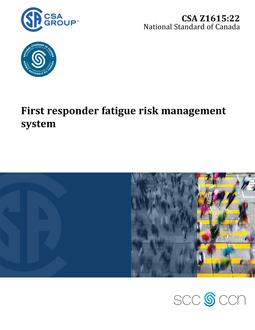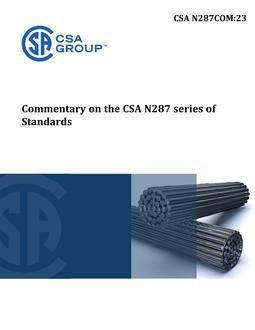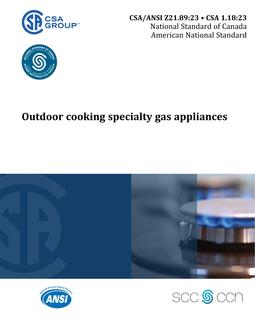
CSA Z1615:22
- Comments Off on CSA Z1615:22
- CSA
Preface
This is the first edition of CSA Z1615, First responder fatigue risk management system . This Standard sets out requirements and provides guidance to support Canadian first responder organizations to mitigate the risk of harm if fatigue is present, by identifying hazards, and assessing and controlling risks. This Standard and its requirements can be applied to any type of risk related to fatigue, and can be applied to both sleep-related and task-related fatigue. This Standard is an evidence-informed document that encompasses existing CSA Standards and provides minimum requirements and guidance for first responder organizations to support their mitigation strategies to address the risk of harm if fatigue is present in the workplace. Addressing fatigue in the workplace can enhance user health, safety, and well-being, and optimize system performance in order to prevent occupational injuries and illnesses and maximize the ability to provide safe and effective service to Canadians. CSA Group acknowledges that the development of this Standard was made possible, in part, by the financial support of the Canadian Safety and Security Program (CSSP), managed through the Defence Research and Development Canada, Centre for Security Science (DRDC CSS). Project partners providing support are the Canadian Institute for Safety, Wellness, and Performance (CISWP) at Conestoga College Institute of Technology & Advanced Learning, County of Renfrew Paramedic Service, Paramedic Association of Canada, and Paramedic Chiefs of Canada. The views expressed in this Standard do not necessarily reflect those of DRDC CSS/CSSP. This Standard was prepared by the Technical Committee on First Responder Fatigue Risk Management System, under the jurisdiction of the Strategic Steering Committee on Public Safety, and has been formally approved by the Technical Committee. This Standard has been developed in compliance with Standards Council of Canada requirements for National Standards of Canada. It has been published as a National Standard of Canada by CSA Group.
Scope
1.1 General This Standard specifies requirements for the identification of hazards, and assessment and control of risks, across first responder occupations. This Standard can be applied to any type of risk and can be applied to both sleep-related and task-related fatigue. It is intended that this Standard be utilized to harmonize risk management processes in existing and future standards. It provides a common approach in support of standards dealing with specific risks and/or specific first responder occupations and does not replace those standards.
1.2 Structure This Standard provides a framework for organizations to prepare for and respond to fatigue risk management at the organizational level. A FRM system includes policies, processes, programs, procedures, and practices related to the following: a) a voluntary framework for fatigue risk management at the organizational/system level; b) requirements and direction on planning, developing, implementing, and evaluating the FRM system within the framework; and c) informative guidance on risk assessment tools, implementing feasible risk control strategies and performance indicators. Clause 4 sets a series of requirements to establish organizational commitment by identifying roles and responsibilities to a fatigue risk management (FRM) system. Clause 5 sets a series of requirements for first responder organizations in planning for a FRM system. Clause 6 outlines requirements for implementing an effective FRM system. Clause 7 outlines the FRM process in identifying hazards, evaluating risk, and controlling risks.
1.3 Guiding principles It is important to consider fatigue as a normal condition that we all experience, regardless of our best efforts, and that it should not be regarded as a disciplinary issue. The guiding principles that are the foundations for this Standard are the following (not in any particular order):
a) Fatigue is a normal condition that can be managed. Fatigue is a multi-causal and multi-dimensional phenomenon that is experienced by all people, regardless of best efforts. Fatigue should not be regarded as a disciplinary issue. The risks that fatigue causes can be minimized through a management system.
b) Fatigue risk management creates and protects value. Fatigue risk management contributes to the demonstrable achievement of objectives and improvement of performance in, for example, health and safety, worker well-being, security, legal and regulatory compliance, public acceptance, product or service quality, project management, efficiency in operations, governance, and reputation.
c) Fatigue risk management is an integral part of organizational management systems. Fatigue risk management is not a stand-alone activity that is separate from the main activities and processes of the organization. Fatigue risk management is a shared responsibility between management and workers, and is an integral part of an effective organizational management system (e.g., an occupational health and safety management system).
d) Fatigue risk management is part of decision-making. Fatigue risk management helps decision-makers make informed choices, prioritize actions, and distinguish among alternative courses of action.
e) Fatigue risk factors are explicitly addressed through systematic analyses. Fatigue risk management explicitly takes into account the nature of fatigue risk factors, how these risk factors increase the likelihood of fatigue, and how fatigue can affect the risk level of other hazards that are already present in a work scenario. Data internal and external to the organization should be evaluated through a structured approach. Stakeholders should be aware of limitations of the data, evaluation methods, and the divergent approaches among experts. A systematic and structured approach to fatigue risk management contributes to efficiency and to consistent, comparable, and reliable results.
f) Fatigue risk management is systematic, structured, and timely. A systematic, timely, and structured approach to fatigue risk management contributes to efficiency and to consistent, comparable, and reliable results.
g) Fatigue risk management is based on the best available evidence-informed information. The inputs to the process of managing risk are based on information sources such as historical data, scientific evidence, experience, stakeholder feedback, observation, forecasts, and expert judgement. However, decision-makers should inform themselves of, and should take into account, any limitations of the data or modelling used or the possibility of divergence among experts.
h) Fatigue risk management is tailored to organizational goals and objectives. Fatigue risk management is aligned with the organization’s external and internal context and risk profile.
i) Fatigue risk management accounts for human and cultural factors in a transparent and inclusive manner. Appropriate and timely involvement of stakeholders and, in particular, decision-makers at all levels of the organization, including frontline personnel, supervisors, administrators, and worker representatives, ensures that fatigue risk management remains relevant and up to date. Involvement also allows stakeholders to be properly represented and to have their views taken into account in determining risk criteria and effective control strategies.
j) Fatigue risk management is dynamic and facilitates continual improvement of the organization. Effective risk management responds to change continuously. External and internal events can change context and knowledge. Risks could emerge, change, or disappear. Organizations should develop and implement strategies so that fatigue risk management adapts as changes occur in other aspects of their organization.
1.4 Terminology In this Standard, “shall” is used to express a requirement, i.e., a provision that the user is obliged to satisfy in order to comply with the Standard; “should” is used to express a recommendation or that which is advised but not required; and “may” is used to express an option or that which is permissible within the limits of the Standard. Notes accompanying clauses do not include requirements or alternative requirements; the purpose of a note accompanying a clause is to separate from the text explanatory or informative material. Notes to tables and figures are considered part of the table or figure and may be written as requirements. Annexes are designated normative (mandatory) or informative (non-mandatory) to define their application.
Product Details
- Edition:
- 1st
- Published:
- 07/25/2022
- ISBN(s):
- 9781488342448
- Number of Pages:
- 69
- File Size:
- 1 file , 1.6 MB
- Product Code(s):
- 2429955, 2429954, 2429954, 2429955
- Note:
- This product is unavailable in Russia, Ukraine, Belarus



